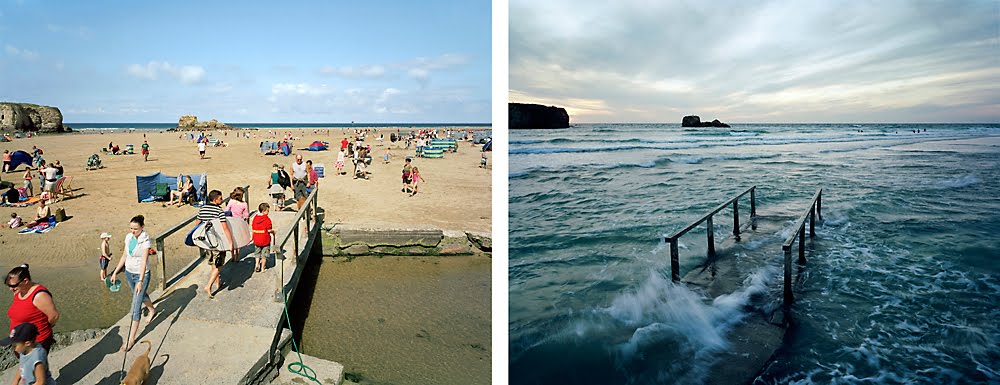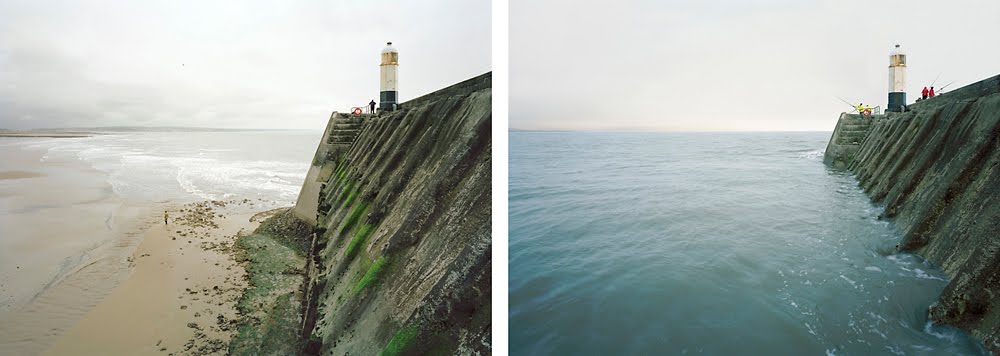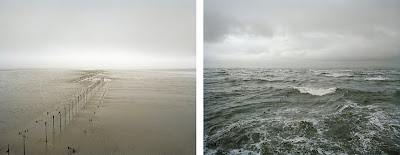Critical Mass: Michael Marten
Born in London, Michael Marten has been working for the past eight years on Sea Change, a study of the tides around the coast of Britain. The views in each diptych are taken from identical positions at low tide and high tide, usually 6 or 18 hours apart. He comes to this work with an interest in science and medicine. In fact, he started a stock agency, the Science Photo Library, that concentrated on science and medicine imagery. He also has been the picture editor and co-author of several books of scientific imagery.
I am interested in showing how landscape changes over time through natural processes and cycles. The camera that observes low and high tide side by side enables us to observe simultaneously two moments in time, two states of nature. Recent landscape photography has often focused on human shaping (and reshaping) of the environment – agriculture, urbanisation, globalisation, pollution. Even when this approach is critical and committed, it also serves to emphasise, even glamorise, humankind’s power over nature. I’m interested in rediscovering nature’s own powers: the elemental forces and processes that underlie and shape the planet.
The tides are one of these great natural cycles. I hope these photographs will stimulate people’s awareness of natural change, of landscape as dynamic process rather than static image. Attending to earth’s rhythms can help us to reconnect with the fundamentals of our planet, which we ignore at our peril. ‘Sea Change’ also comments on climate change. The tide floods in and quickly recedes again, but rising sea levels will flood our shores and not recede for thousands or millions of years. Many of the views in these pictures may have disappeared in 100 years’ time.
‘Sea Change’ is an example of ‘comparative photography’, where two or more images show development in time (or other dimensions). The ‘rephotography’ of Mark Klett, and Nicholas Nixon’s portraits of the Brown sisters, are well-known examples.
Posts on Lenscratch may not be reproduced without the permission of the Lenscratch staff and the photographer.
Recommended
-
Salua Ares: Absense as FormNovember 29th, 2025
-
Ricardo Miguel Hernández: When the memory turns to dust and Beyond PainNovember 28th, 2025
-
Pamela Landau Connolly: Columbus DriveNovember 26th, 2025
-
KELIY ANDERSON-STALEY: Wilderness No longer at the Edge of ThingsNovember 19th, 2025
-
Jackie Mulder: Thought TrailsNovember 18th, 2025


































































